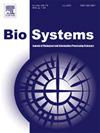Surface code model for Fibonacci helical pathways of the Orch OR microtubule
IF 2
4区 生物学
Q2 BIOLOGY
引用次数: 0
Abstract
The Objective Reduction (OR) theory suggested by Sir Roger Penrose presented a novel perspective on the measurement problem of quantum mechanics and consciousness. Subsequently, based on the assertion of anesthesiologist Dr. Hameroff, the theory proposed that the phenomenon of OR could also manifest in microtubules within neurons. This would, serve as the trigger for consciousness, thereby forming the basis of Orchestrated OR (Orch OR). The peculiarity of this theory lies in the claim that tubulin and its higher neuronal information structures are not simply additive, rather, they are formed in a topological manner. Specifically, higher information structure of tubulin, helical pathways are presumed to form an intersecting pattern in both left-handed and right-handed directions, following a repeating Fibonacci series (3, 5, 8, 13, …), and are interconnected with each other. There have been attempts to examine these unique characteristics. However, experimenting upon these quantum characteristics in the microtubule appears to be plagued by certain limitations. Therefore, this study proposed a surface code model to implement this biological model on a quantum computer, focusing on its quantum properties. To the best of our knowledge, this is the first study to attempt this. The study emphasizes that interpreting asymmetric Fibonacci helical pathways as logical qubits can stabilize surface code. In addition, we analyzed the conditions required for experimenting with this model based on the development of current quantum computer. Although the experimental feasibility of this study is dependents on future quantum computer development, it provides significant insights into Orch OR research by offering a novel perspective.
Orch OR微管斐波那契螺旋路径的表面代码模型
罗杰·彭罗斯爵士提出的客观还原理论为量子力学和意识的测量问题提供了一个新的视角。随后,根据麻醉师Hameroff博士的断言,该理论提出OR现象也可以在神经元内的微管中表现出来。这将作为意识的触发,从而形成“精心安排的或”(Orch OR)的基础。该理论的独特之处在于,它认为微管蛋白及其高级神经元信息结构不是简单的相加,而是以拓扑方式形成的。具体来说,在微管蛋白的高级信息结构中,螺旋路径被认为在左、右手方向上形成交叉模式,遵循重复的斐波那契数列(3,5,8,13,…),并且彼此相互连接。人们曾试图研究这些独特的特征。然而,在微管中对这些量子特性进行实验似乎受到某些限制的困扰。因此,本研究提出了一种表面代码模型,以在量子计算机上实现该生物模型,重点关注其量子特性。据我们所知,这是第一个尝试这样做的研究。该研究强调,将非对称斐波那契螺旋路径解释为逻辑量子比特可以稳定表面代码。此外,结合当前量子计算机的发展,分析了实验该模型所需的条件。虽然本研究的实验可行性取决于未来量子计算机的发展,但它提供了一个新的视角,为Orch OR研究提供了重要的见解。
本文章由计算机程序翻译,如有差异,请以英文原文为准。
求助全文
约1分钟内获得全文
求助全文
来源期刊

Biosystems
生物-生物学
CiteScore
3.70
自引率
18.80%
发文量
129
审稿时长
34 days
期刊介绍:
BioSystems encourages experimental, computational, and theoretical articles that link biology, evolutionary thinking, and the information processing sciences. The link areas form a circle that encompasses the fundamental nature of biological information processing, computational modeling of complex biological systems, evolutionary models of computation, the application of biological principles to the design of novel computing systems, and the use of biomolecular materials to synthesize artificial systems that capture essential principles of natural biological information processing.
 求助内容:
求助内容: 应助结果提醒方式:
应助结果提醒方式:


